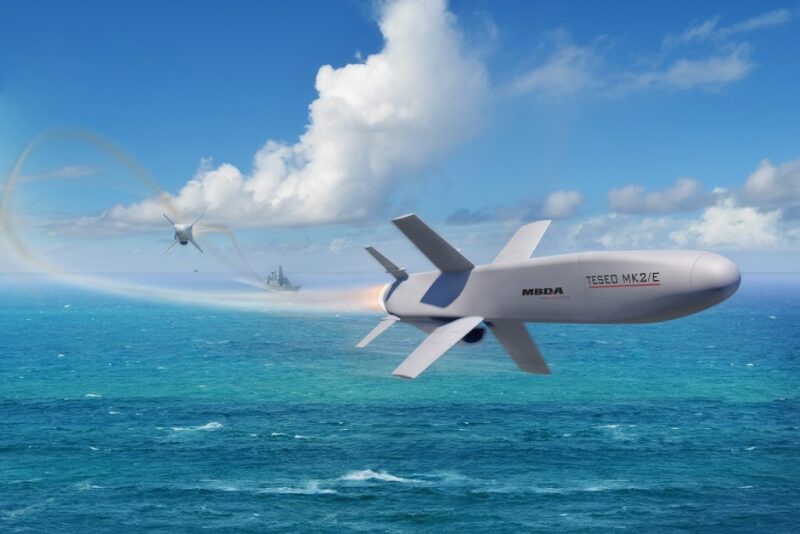The Egyptian Navy has modernized its inventory of Otomat Anti-ship missiles to the Teseo Mk2/A standard to be used on the FREMM Bergamini-class frigates and potentially by coastal defence batteries.
Egypt has also purchased a number of new production Teseo Mk2/A.
According to MBDA, Egypt is one of the customers that decided to modernize at least part of its inventory of Otomats, awarding MBDA a contract for the upgrading to the Teseo Mk 2/A standard to be used on the two FREMM frigates provided by Fincantieri and potentially by coastal defence batteries.
The contract also includes a limited number of new production Teseo Mk2/A that are also being supplied to other international customers.
“The new Teseo EVO (Evolved) or Mk 2/E anti-ship cruise missile is the response to the operational need for shipborne and coastal defence applications, facing threats evolution within a timeframe of twenty years and more,” Marco Gelli, Teseo Mk2/E Chief Engineer and Head of New Business, Italian Anti-Ship Weapons Systems Programmes at MBDA, told the media during a briefing on the development of anti-ship weapon systems capabilities developed by MBDA Italia at its centre of excellence of La Spezia.
The Otomat has evolved from the initial Mk 1 model to the Mk 2 of the 1980’s, the main difference laying in the re-vectoring capability that significantly extended the range. The latter design has further evolved at the beginning of the 2000’s to the latest Teseo Mk 2/A version, internationally known as Otomat Mk 2 Block IV.
Teseo Mk2/A anti-ship missile
Teseo Mk2/A is an upgraded variant of OTOMAT anti-ship missile that can be fired from both ground-based platforms and surface ships.
The newest variant has been designed for operation in the littoral environment and features modern fully digital onboard electronics, new missile interface, Marte Mk2/S missile’s active radar seeker with a re-designed signal processing system, and a data-link that allows for re-targeting (re-vectoring) in-flight.
Teseo Mk2/A is also provided with a new mission console and a new launching system. The Italian Navy started flight tests in June 2006.
MBDA Teseo EVO
The Teseo EVO is the latest addition to a family of long-range ‘heavy’ anti-ship missiles that was designed in the early 1970s with an industrial cooperation between Oto Melara and Matra that gave birth to the Otomat missile.
The Teseo EVO is a completely new long range missile due to a new propulsion system, an advanced and unique dual-mode homing head and a state-of-the-art scalable warhead, and a new mission planning system, with a full mission control of the missile flight.
It features a newly developed transonic airframe with advanced aerodynamic and flight controls to provide increased manoeuvrability and survivability.
Slightly over 4 meters long and with a weight of 700 kg, the airframe has a forward inverted trapezoidal-shaped section while the aft part has a trapezoidal section to reduce the overall radar signature with midsection X-arranged foldable wings (1.18 x 1.18 meters when extended), a ventral inlet for the turbofan engine, and four smaller rear moving foldable surfaces and actuators to control the missile.
The design further reduces the radar visibility with absorbing coating and materiel.
With over 140 launches and a success rate of more than 85%, the Teseo/Otomat family is today in service with 10 customers on board different classes of ships, from patrol vessels up to guided missile destroyers.
